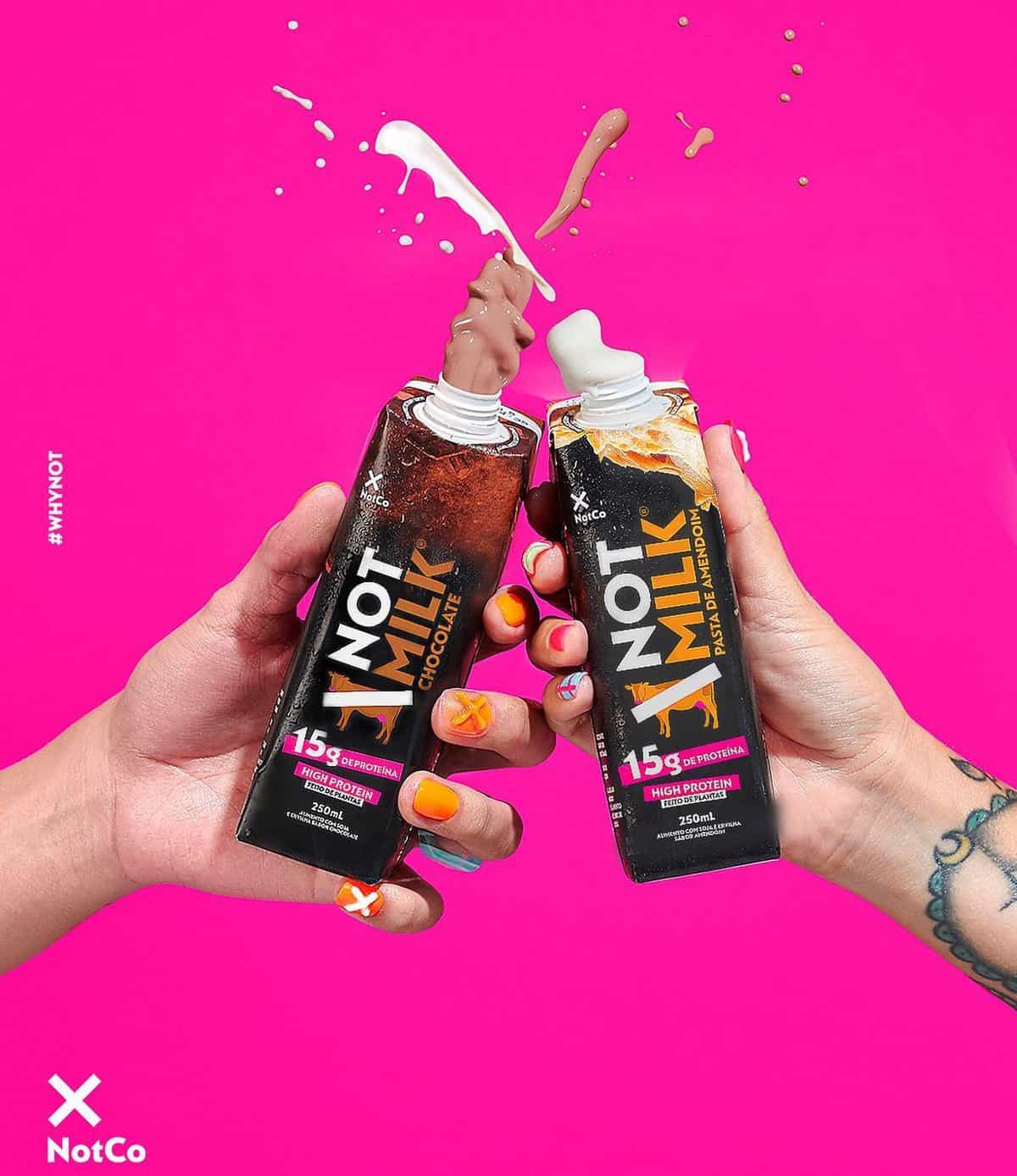Wanda Fish: “Our Mission is to Supply a Delicious and Healthy Product That Will Also Do Good to Our Planet” – vegconomist

Wanda Fish Technologies is an Israeli food-tech startup producing cultivated fish products. Less than three years after it was founded, the company has just announced the successful development of its first whole-cut cultivated bluefin tuna prototype, toro sashimi.
This progress has partly been made possible by Wanda Fish’s collaboration with Tufts University, which began in 2022 with the aim of accelerating the development of cultivated fish. The startup also raised $7 million in seed funding last year to scale the production of its cultivated bluefin tuna.
CEO and co-founder Daphna Heffetz spoke to us about the challenges and benefits of cultivated seafood production, as well as the future potential of the technology.
Can you introduce us to Wanda Fish? What was your motivation to start a cultivated seafood company?
I founded Wanda Fish in November 2021, together with The Kitchen Hub, after managing a number of biotech companies. The goal was to build a cultivated seafood company, basing it on an array of seafood products that make product and commercial sense.
“…hybrid products […] will offer a delicious and nutritional product to market and satisfy avid bluefin tuna consumers”
As such, our first product is bluefin tuna, which is the finest among the tuna family and is known for its nutritional value and presence of omega-3 fatty acids. It is considered a premium product in Japanese cuisine. Bluefin tuna also ticks all the boxes from a demand and supply perspective, sustainability, and commercial sense.

I think the approach we took from day one, both on our technological targets and core values, really differentiates us in this space. While we have been a bit under the radar since our founding, our focus was and is on developing the best product we can in a rapid, professional, and transparent way. This is one core value I took through managing different companies in different fields, and I believe in it even more so in food tech.
In 2021, you launched a collaboration with Tufts for the exclusive rights to intellectual property in fish cell cultivation developed by Tufts researcher David Kaplan, a leader in cellular agriculture. Additionally, you agreed on a two-year sponsored research agreement supporting Kaplan’s research into cultivated fish. Was this collaboration essential to the establishment of your cultivated fish platform?
The collaboration was important to facilitate and rapidly advance our cultivated fish platform, as Prof. Kaplan and his team had vast experience and understanding of cultivated meat technologies.
What innovations or developments did you achieve through this collaboration with Tufts University? What were the benefits for Tufts?
That collaboration enabled Prof. Kaplan and his team to use and modify the technologies they had already previously developed in the fields of cultivated insect and bovine cells on the mackerel fish. This assisted us in paving the way for the establishment of our yellowtail and bluefin tuna cell lines. The benefit for Tufts was an opportunity to test and adapt their technologies on cultivated fish.
Your tech is described as a GMO-free platform for producing cell-based fish of various species. What kind of cells do you use?
We are using myoblast cells, a pre-muscle stem cell. Our cell lines are immortalized, and can efficiently differentiate into muscle fibers and accumulate fat using non-GMO techniques.

Why did you decide to start with bluefin tuna instead of other species that you thought of cultivating, like mackerel and yellowtail tuna?
The decision to go for bluefin tuna was driven by two factors: its high demand and our commitment to developing a pollution-free, sustainable bluefin tuna toro that overcomes the drawbacks found in wild-caught.
From a product perspective, bluefin tuna is a premium product, with a cost to the consumer well above $100/kg. There are no alternative products that come close to the traditional product, and thus, there is a strong business case for cell-cultivation solutions.
“In many ways, we are doing groundbreaking work”
The premise at the end of the day was to choose a product that has a high market-product-fit, and cultivated bluefin tuna scores high as such a product. We then set out to solve all the challenges associated with cultivated bluefin tuna development.
What have been the major challenges in developing your seafood platform?
Firstly, the amount of research on cell cultivation of marine animals is far less than on meat. Thus, in many ways, we are doing groundbreaking work. As a result, we needed to optimize, from day one, the media ingredients and other processes to support the growth of our fish cells, which act differently than mammalian cells. In particular, the bluefin tuna cell lines are much more challenging to grow, evidenced by the very few companies that succeeded in growing and differentiating these types of cells. Luckily, we succeeded in raising a substantial seed round in the tough industry atmosphere of 2022 due to our unique product differentiation and rapid and outstanding achievements.

Despite the challenges in establishing the bluefin tuna cell lines, these cells share the unique advantages of other fish cells: a remarkable ability to undergo spontaneous immortalization in culture, and temperature and oxygen tolerance, which significantly reduces production costs, making our manufacturing system highly cost-effective and efficient.
You have successfully developed a cultivated whole-cut bluefin tuna prototype. Congratulations. Where did you develop the prototype?
Our R&D facility is based in Israel, where all the work is currently being held, including working with local and foreign chefs.
Your tech allows you to differentiate muscle and fat cells and, even more, stimulate the growth of bluefin tuna’s fat cells, allowing you to mimic the fatty underbelly part of the fish. Do these cells grow in the same bioreactor, or are they grown separately and mixed later to make your prototype?
Our proprietary technology enables us to induce fat accumulation using our tuna myoblast cells to mimic intramuscular fat. Thus, no mixing is required before making our product.
Your 3D filet combines the cell’s biomass with a plant-based matrix. What can you tell our readers about the advantages of hybrid products, and why do they matter?
As we all know, the greatest challenge to cultivated food is its high manufacturing cost at scale. Moreover, as demand for seafood products, and bluefin tuna specifically, is constantly rising, we need to bring a good product as soon as possible. Hence, from a manufacturing perspective, we believe that hybrid products containing muscles, fat, and connective tissue biomass grown from the fish cells will offer a delicious and nutritional product to market and satisfy avid bluefin tuna consumers.

Despite having some plant-based ingredients, Wanda Fish’s bluefin tuna is said to be identical to the original due to its unique fat and muscle combination. It’s important to remember that although we are a technology-based company, we are a food company, and our mission is to supply a delicious and healthy product that will also do good to our planet.
What will be your scaling strategy, scale up or scale down?
Even though the cultivated food industry is very young, we’ve seen many trends in manufacturing. Fortunately for me, I arrived at Wanda Fish after managing a number of biotech companies, so I know how trends come and go, and how innovation spreads once right. What I can share is that we’re currently actively practicing several options to scale up, taking into account both the matureness of the technology and the commercial need. Bluefin tuna is not like chicken, it is not sold in the same quantities or at a similar price point. These elements give us the flexibility to make the right decision at the right time without committing to a CAPEX-heavy model.
Wanda aims to launch its product into food service in the coming years. In which market? Are you targeting premium seafood restaurants like the Californian seafood company Blue Nalu?
Firstly, it’s important to say we congratulate BlueNalu for their work, as they’ve really paved the way for many cultivated food companies, especially in the seafood space. I know Lou and he is a true leader in this space.
“This is still a young industry, and new solutions will come”
Secondly, the question of the market really depends on regulatory advancements. We strongly believe Asia and the US are ideal regions for our product, and we are seeing strong indications of it, especially in Japan and Korea, as well as other countries in Asia and also from discussions we are having with companies in the region. It would have been unimaginable a few years ago that established Japanese food companies would develop plant-based seafood products, yet we are seeing more and more initiatives from large food companies in Japan, Korea, and elsewhere in Asia.

As for market penetration, yes, we intend to launch our product in premium seafood restaurants, as it is where toro bluefin tuna is mostly consumed. We plan to start the regulatory approval process in 2025.
We have seen many headlines announcing cultivated meat’s failure to scale beyond the lab. Do you think you need years of R&D to scale, or can your technology reach commercial production?
I think we need to be realistic, both in and outside of our industry. The headlines a few years ago by some companies indicating early commercial viability were premature, and we’re seeing the implications of it now. This is still a young industry, and new solutions will come. This is not my first company or my first industry, so I have confidence in our work and the work of other companies and researchers. We repeatedly experience how our work, and the work of our peers in the industry, help to close the gaps we still have.
But the answer to your question also needs to take into account the product at hand. For some commodity products, such as chicken, it may take years for the technology to mature enough to make commercial sense because of their high quantitates. However, for premium products such as bluefin tuna we will be able to start commercial activities at an earlier point without jeopardizing product development and consumer experience, and do so with a solid business model.




